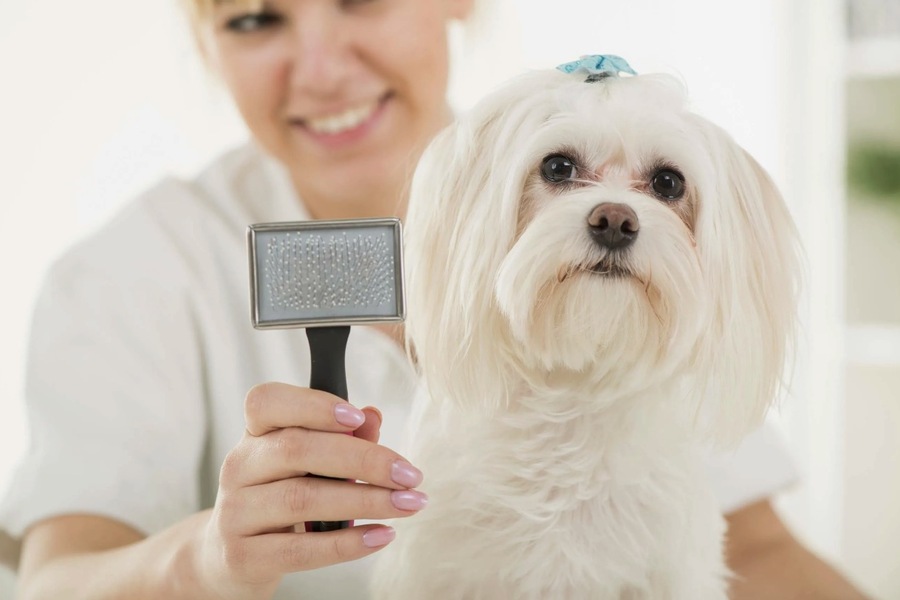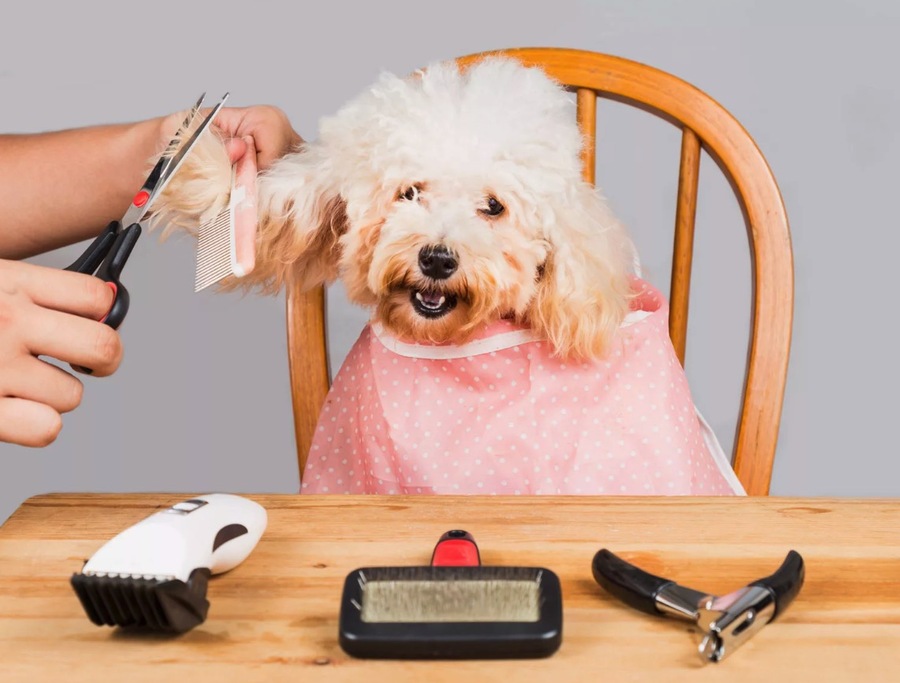Dogs are celebrated as loyal companions, deeply intertwined with human life as more than just pets, but as integral members of families. This bond underscores the importance of their well-being, where grooming plays a pivotal role not only in maintaining their physical appearance but also in their health and happiness. In addition, services such as daycare for dogs provide opportunities for dogs to engage in social interactions and physical activities which are essential for their well-being. In this detailed exploration, we dive into the nuances of dog grooming, highlighting its significance, the various methods available, comprehensive grooming procedures, preparation tips, and the essential tools required for effective grooming.
What is Dog Grooming?
Dog grooming encompasses a wide range of activities aimed at maintaining and enhancing a dog’s hygiene and appearance. This includes bathing, hair trimming, nail clipping, and more sophisticated services like styling and medical grooming. The practice is not merely cosmetic but is a critical component of a dog’s routine care that significantly impacts their health. Grooming not only helps keep the dog looking good but also plays a crucial role in monitoring the health status, catching potential problems early, and contributing to the dog’s overall quality of life.
The Importance of Dog Grooming
Grooming your dog regularly is beneficial in several key aspects:
– Skin and Coat Health: Grooming maintains the skin’s cleanliness and the coat’s luster, preventing common skin issues and ensuring the dog’s fur is free from mats and tangles that can cause pain and skin irritation.
– Parasite Control: Regular grooming sessions are vital for early detection and removal of external parasites, which can affect the dog’s health if left unchecked.
– Pet Comfort: Keeping the fur-free from knots and the nails properly trimmed ensures the dog is comfortable as it moves and rests.
Disease Prevention: Grooming helps reduce the risk of infections and other health problems by maintaining clean ears, teeth, and overall coat.
– Aesthetics: A well-groomed dog looks better and is a pleasure to interact with, which can enhance social interactions with humans and other dogs.
Psychological Well-being: The grooming process can help reduce stress and anxiety in dogs by removing irritants that cause discomfort and providing regular, soothing sessions that help stabilize mood.
– Better Understanding of Your Pet: Regular grooming allows owners to become familiar with their pet’s body, enabling the early detection of any unusual signs such as lumps, sore spots, or changes in temperament that may indicate health issues.

Types of Grooming
– Hygienic Grooming: This basic form of grooming focuses on everyday cleanliness and includes bathing and regular brushing to keep the coat in good condition.
– Professional Grooming: Typically performed by trained groomers, this type of grooming can include more specialized services tailored to the dog’s breed or the owner’s preferences, such as specific haircuts, thorough de-matting, or preparation for dog shows.
– Aesthetic Grooming: This is often associated with show dogs or specific breed standards where grooming is performed not just for cleanliness but to enhance the dog’s appearance according to aesthetic guidelines or competition standards.
Grooming Procedures
Comprehensive grooming involves several steps, each tailored to address specific aspects of the dog’s hygiene:
– Washing: Using dog-specific shampoos that cleanse without harming their skin, washing removes dirt and odors and can be therapeutic.
– Hair Care: Regular brushing and combing help distribute natural skin oils throughout the coat, reduce shedding, and prevent tangles.
– Stripping: Necessary for certain breeds with wiry coats, stripping helps maintain the coat’s health and appearance.
– Haircutting: Beyond aesthetics, haircuts can be crucial for maintaining a manageable coat that doesn’t interfere with the dog’s visibility or mobility.
– Ear Care: Cleaning the ears decreases the risk of infections and can help prevent conditions that lead to hearing loss.
– Dental Care: Regular teeth cleaning is essential for preventing tartar build-up and oral diseases.
– Nail Care: Trimming nails is vital for avoiding pain and posture problems that can lead to long-term health issues.
– Parasite Control: Applying treatments to prevent or eliminate parasites protects not just the individual dog but other pets and humans they may contact.
Preparation for Grooming Procedure
Effective grooming starts with proper preparation, which can greatly influence the grooming experience for both the dog and the groomer:
– Walking: A pre-grooming walk helps the dog expend excess energy, making them calmer and easier to handle during the grooming session.
– Training for Travel: For dogs that visit professional groomers, getting them accustomed to traveling can reduce the stress associated with grooming days.
– Feeding: It’s advisable to avoid feeding the dog immediately before grooming to prevent any discomfort or nausea during the process.

Grooming Tools
The right tools are critical for effective grooming and vary based on the type of grooming and the specific needs of the dog:
– Brushes and Combs: Essential for detangling hair and ensuring a smooth coat.
– Shampoos and Conditioners: Specially formulated to suit a dog’s sensitive skin and coat needs.
– Clippers and Scissors: Used for trimming hair to the appropriate length.
– Ear and Eye Cleaners: Formulated to be safe and gentle for cleaning sensitive areas.
– Flea and Tick Treatments: These are important for keeping the dog free from parasites and comfortable.
Conclusion
Dog grooming is integral to pet care, ensuring dogs are healthy, comfortable, and well-integrated into social settings. By investing time and resources into regular grooming practices, dog owners can enhance their pets’ lives, prevent potential health issues, and deepen their bond with their furry companions.

Surfer, foodie, record lover, Swiss design-head and ADC member. Performing at the sweet spot between simplicity and elegance to create not just a logo, but a feeling. Let’s chat.


